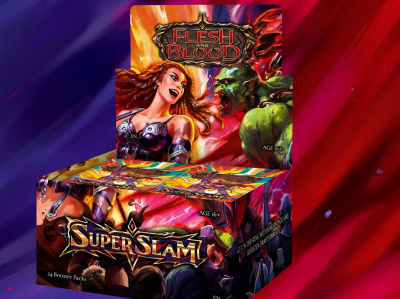 Rolling for Initiative is a weekly column by Scott Thorne, PhD, owner of Castle Perilous Games & Books in Carbondale, Illinois and instructor in marketing at Southeast Missouri State University. This week, Thorne talks about the opportunities from a long-time supplier to the hobby game market.
Rolling for Initiative is a weekly column by Scott Thorne, PhD, owner of Castle Perilous Games & Books in Carbondale, Illinois and instructor in marketing at Southeast Missouri State University. This week, Thorne talks about the opportunities from a long-time supplier to the hobby game market.Back in the late 70s to about the mid-90s, one thing a customer going into almost any game store would find was an Osprey Books spinner rack. They are much less common today. On my last tour of game stores in 2011, I do not remember going into a store with the once ubiquitous Osprey spinner rack in it. Back when we opened up our store, however, they were found almost everywhere. A round rack with the Osprey logo, it held about a gross of assorted Osprey Men at Arms and Campaign books and easily stood out among the assortment of motley racks the store had purchased secondhand or scavenged from other stores, basements or warehouses. Retailers often spent a good sized chunk of their annual profits to stock in the line of Osprey books for two reasons.
First, the line sold well. Back before the advent of the Internet and the decline in historic miniatures as a staple item in most shops, Osprey Books were the most reliable source of uniform details and paint schemes for historic miniatures, as well as information on heraldry, armor and castle fortifications for the slew of fantasy role-players that sprung up with the advent of Dungeons & Dragons. We used to sell their Medieval Heraldry and Samurai books like clockwork to people who wanted more detail for their D&D, Rolemaster and Bushido (now there's a RPG name from the past). Osprey's Men at Arms books provided the exact information they wanted.
Second, the Osprey rack was often the only quality piece of point of purchase display material available to the typical gaming store. In the early years, when games stores first started staking out ground as a particular segment of the retailing market almost the only display fixture that was tailored to fit a particular product line was the Osprey rack. Later, towards the mid-90s, fixtures for Games Workshop miniatures and Dungeons & Dragons books made it into stores and today prominently feature in many game store layouts (with a noticeable lack of point of purchase displays from other manufacturers, I might add. The only other manufacturer supplies racks in our store are assorted paint rack and an old White Wolf spinner rack. But I digress.), while the tried and true Osprey rack appears less and less.
In recent years, Osprey has branched out from its historical military roots, launching the highly successful (at least in our store) Field of Glory historic miniatures rules and books with more mass market appeal including War in the Pacific, From Rocks to Rockets and The Good Life on a Budget. The company has even ventured beyond its traditional focus on factual source materials with Zombies: A Hunter's Guide and a science fiction rules set titled Tomorrow's War, using the Force on Force rules from Ambush Alley Games.
Also, in the last couple of years, Osprey has become a much more active participant at the GAMA Trade Show, sending a representative to speak with retailers and hosting presentations at the 2011 and upcoming 2012 shows. Osprey is also one of the few companies in the industry to offer a co-op advertising program (which we used with some success). As Osprey was founded in 1969, for a company older than any currently operating in our industry (Hasbro a notable exception). Osprey Books is proving itself quite willing to adapt itself to the current marketplace and more willing to work with retailers than many other companies in the industry (of course, stocking their books and showing a willingness to reach out to Osprey certainly helps).
The opinions expressed in this column are solely those of the writer, and do not necessarily reflect the views of the editorial staff of ICv2.com.








